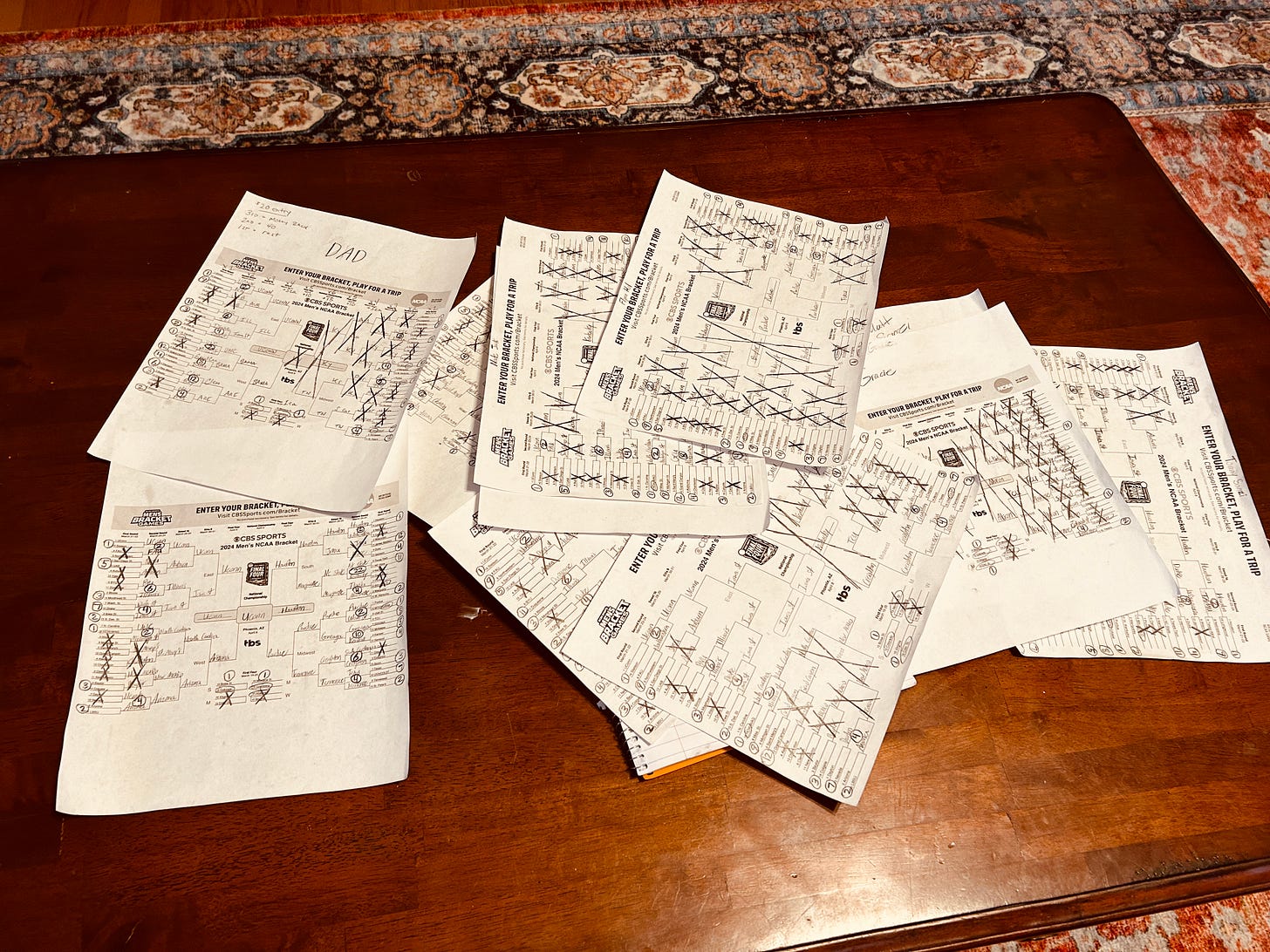As many of you know, I write a monthly column in my local paper that I often share here too since so many of you live far away and won’t be picking up our free weekly paper at the grocery store or coffee shop. This piece below ran here today with a different title in The Valley Breeze.
March Madness reigns supreme in my house at the moment and no, I’m not talking about the Washington Bridge. Our coffee table is currently littered with NCAA tournament brackets and at the time of writing this, I am not faring too well in our 10 person pool of family and friends. I picked Auburn to win the whole thing and their loss to...ahem…Yale, was precisely the kind of upset that has come to define this annual tournament that is equal parts maddening and exhilarating. Our dog even has her own bracket—we lured her with treats to determine her picks. She picked Yale to beat Auburn.
My three teenage sons are the ones who now keep me most connected to this tournament but my memories of March Madness go way back to my days as a middle schooler and later as a high school teacher. All these memories involve adolescent boys who were obsessed with this single elimination college basketball tournament that comes around every March. There were no smartphones or ESPN apps back during my earliest teaching days more than twenty years ago—instead, there was a big TV on a cart with wheels in the back room of the high school library where the games would play all day. I can still remember boys in my class (Pete and Ben, I’m looking at you) coming up with creative reasons to leave the classroom under false pretenses so they could head down to the library to catch a few minutes of tournament action. And decades before that, I remember a lunch table full of boys in my grade picking teams out of a brown paper bag. I still remember how despondent one friend was when Illinois lost to Austin Peay State University in 1987. I thought of that the other day when my own son was yelling at the television because none of the players on the teams he had picked could make a free-throw.
You may assume, as I did, that the brand known as “March Madness” was the brainchild of the NCAA. It was not. It turns out that this catchy two word alliteration first appeared in a 1930’s essay written by an assistant executive secretary of the Illinois High School Association. Sportswriters and columnists ran with it and now, nearly a century later, it has proven its staying power. The madness is, in part, because 68 college basketball teams compete to win the NCAA Division I championship in men's and women's basketball by playing each other in a single-elimination tournament over the course of just a few weeks. And the inevitable upsets, often described as “insane,” also fit the bill for “madness.” And then there’s the frustration and yes, anger—the losses make people mad. If you have never had the experience of watching someone come unglued over a first round loss of a team they had going all the way to the Final Four, it can be quite entertaining. As one writer from Florida aptly describes it, “yes, you will be mocked for it. Taunting your buddies and mocking their pathetic choices is an essential part of March Madness.”
It is the rare thing that can unite across the generations anymore. My 76-year-old mother has been filling out a tournament bracket for a decade because she is the Grammy of three boys who love March Madness.
I can only hope to still be making March Madness memories when I have children in my life who call me Grammy.






Love this. In sixth grade, my teacher was a huge college basketball fan. And during March madness, sometimes she would wheel a television set into the room and let us watch part of a game.
He was otherwise really strict, but it was a fun thing that brought our class together .